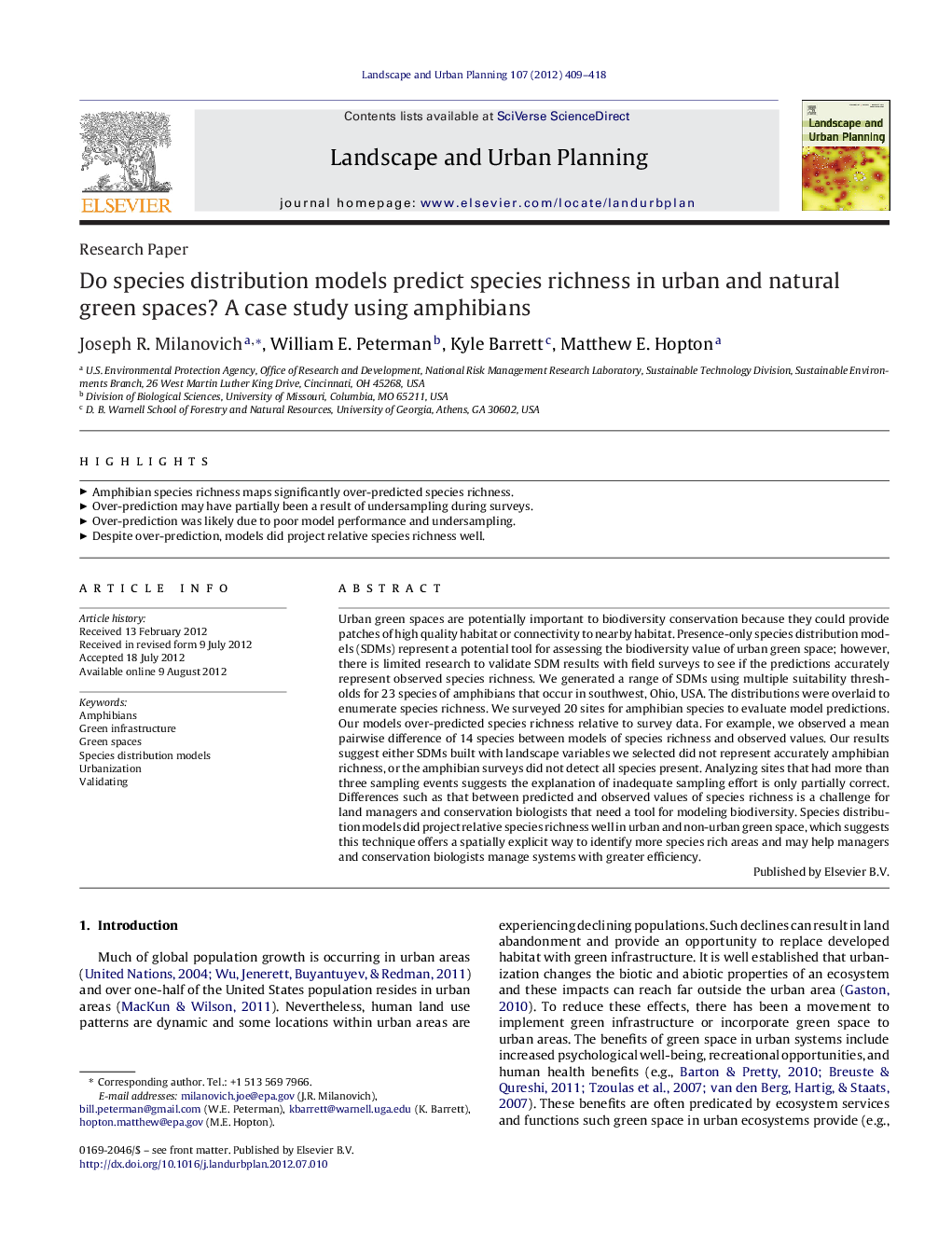| کد مقاله | کد نشریه | سال انتشار | مقاله انگلیسی | نسخه تمام متن |
|---|---|---|---|---|
| 1049396 | 945607 | 2012 | 10 صفحه PDF | دانلود رایگان |

Urban green spaces are potentially important to biodiversity conservation because they could provide patches of high quality habitat or connectivity to nearby habitat. Presence-only species distribution models (SDMs) represent a potential tool for assessing the biodiversity value of urban green space; however, there is limited research to validate SDM results with field surveys to see if the predictions accurately represent observed species richness. We generated a range of SDMs using multiple suitability thresholds for 23 species of amphibians that occur in southwest, Ohio, USA. The distributions were overlaid to enumerate species richness. We surveyed 20 sites for amphibian species to evaluate model predictions. Our models over-predicted species richness relative to survey data. For example, we observed a mean pairwise difference of 14 species between models of species richness and observed values. Our results suggest either SDMs built with landscape variables we selected did not represent accurately amphibian richness, or the amphibian surveys did not detect all species present. Analyzing sites that had more than three sampling events suggests the explanation of inadequate sampling effort is only partially correct. Differences such as that between predicted and observed values of species richness is a challenge for land managers and conservation biologists that need a tool for modeling biodiversity. Species distribution models did project relative species richness well in urban and non-urban green space, which suggests this technique offers a spatially explicit way to identify more species rich areas and may help managers and conservation biologists manage systems with greater efficiency.
► Amphibian species richness maps significantly over-predicted species richness.
► Over-prediction may have partially been a result of undersampling during surveys.
► Over-prediction was likely due to poor model performance and undersampling.
► Despite over-prediction, models did project relative species richness well.
Journal: Landscape and Urban Planning - Volume 107, Issue 4, 30 September 2012, Pages 409–418